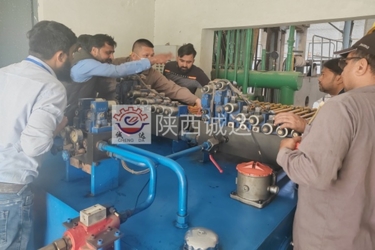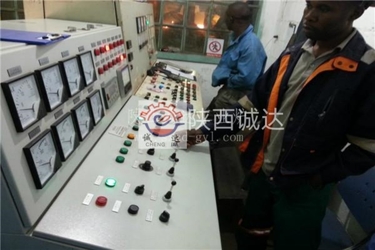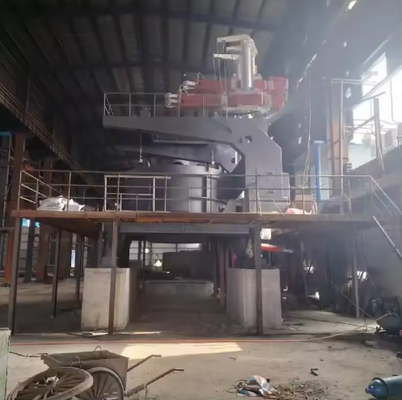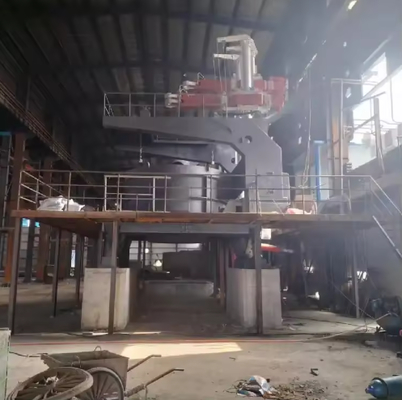-
 サイド・ラシド・アフメッド・バットシャンシ・チェンダ工業炉株式会社 電気弧炉の稼働を完了し 労働者は チェンダの技術者と 慎重に協力して 機械の操作を学びました中国とパキスタンの民間の深遠な友情と優れた協力を示す.
サイド・ラシド・アフメッド・バットシャンシ・チェンダ工業炉株式会社 電気弧炉の稼働を完了し 労働者は チェンダの技術者と 慎重に協力して 機械の操作を学びました中国とパキスタンの民間の深遠な友情と優れた協力を示す. -
 アブバカール1ヶ月以上の集中的な制作とデバッグの後熱交換煙ガス沉着室機器2セットが成功して稼働開始しました ~ プロジェクトに関与したすべてのスタッフが一生懸命働きましたほら!
アブバカール1ヶ月以上の集中的な制作とデバッグの後熱交換煙ガス沉着室機器2セットが成功して稼働開始しました ~ プロジェクトに関与したすべてのスタッフが一生懸命働きましたほら! -
 ジ・ワン温かいおめでとう 韓国のシャンシー・チェンダ工業炉製造会社北チョンチェョン郡 宝石の溶融炉の設備の設置と慎重な製造と厳格な稼働相互に有益な協力を達成するために,より多くの分野での未来を期待しています!
ジ・ワン温かいおめでとう 韓国のシャンシー・チェンダ工業炉製造会社北チョンチェョン郡 宝石の溶融炉の設備の設置と慎重な製造と厳格な稼働相互に有益な協力を達成するために,より多くの分野での未来を期待しています!
競争力のある価格 新品工業用インダクションオーブン/金属電弧オーブン

無料のサンプルとクーポンを私に連絡してください.
WhatsAPPについて:0086 18588475571
ウェチャット: 0086 18588475571
Skype: sales10@aixton.com
24時間オンラインでサポートします
x| ハイライト | 保証付きの工業用インダクションオーブン,鉄鋼製造用電弧炉,新しい状態の金属溶融炉 |
||
|---|---|---|---|
製品説明
そして工業用電弧炉 (EAF)高温炉は,主に金属,特に鉄鋼および他の合金を溶解し精製するために使用される高温炉である.電極と金属電荷の間に発生する電弧を利用して,溶融に必要な熱を生成する鉄鋼産業では,柔軟性,効率性,金属廃棄物のリサイクル能力により,EAFが広く使用されています.
産業用EEAFの主要な構成要素
1炉殻:重鋼板で作られ,高温に耐えるように耐火性のある材料で覆われています.
2電極:電気を伝導し弧を生成するグラフィット電極.
3電極ホルダーとアーム:電極を支えて位置付け.
4電力供給システム: トランスフォーマー,直流器,電圧と電流を調節する制御システムを含む.
5冷却システム: オーバーヒートから炉構造を保護するために水冷却パネルとパイプ.
6傾きメカニズム: 炉が傾き,溶融した金属とスラグを除去する.
7充電システム:スクラップ金属,合金,フルックスなどの原材料を充電するために.
8脱ガスシステム: 溶融過程で発生する蒸気と塵を捕獲し処理する.
産業用EPFの利点
1柔軟性:100%のスクラップ金属を含む幅広い原材料を処理できます.
2エネルギー効率:現代のEAFは高度なエネルギー効率で,先進的な電力制御システムを持っています.
3環境問題利点: 減量CO2エミ特に再生可能エネルギーで動いている場合.
4費用対効果: 統合された鉄鋼工場と比較して,資本と運用コストが低い.
5拡張性: 小規模および大規模生産の両方に適しています.




